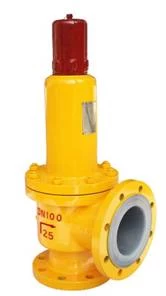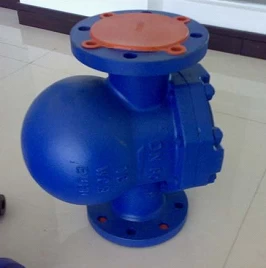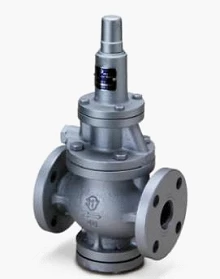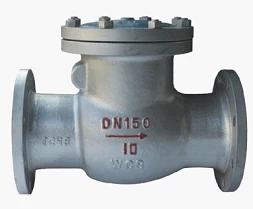The correct operation methods for valves
1.Preparation before operation
Read
the operating instructions carefully before operating the valve. Be sure
to know the flow of gas before operation. Pay attention to check the valve
opening and closing signs. Check the appearance of the valve to
see if the valve is wet. If it is wet, it should be
dried ; if other problems are found, it should be dealt with in
time. If the electric valve is deactivated for more
than 3 months, check the clutch before starting, confirm that the handle is in
the manual position, and then check the insulation, steering and electrical
wiring of the motor.
2.Correct operation method of manual valve
Manual
valve is the most widely used valve. Its hand wheel or handle is
designed according to ordinary manpower, taking into account the strength of
the sealing surface and the necessary closing force. Therefore, you
cannot use a long lever or a long wrench to move. Some people are
accustomed to using wrenches. They should pay close attention to the fact that
when opening the valve, the force should be stable, to avoid excessive force,
which will cause the valve to open and close. Some parts of high-pressure
valves and that have been opened and closed due to shocks have taken into
account that such shock forces cannot be matched with ordinary valves. But
904L check valve open and close was controlled by fluid.
When
the valve is fully open, the handwheel should be turned upside down a little to
tighten the threads tightly to avoid loose damage. For bright-stem valves,
remember the position of the stem when fully open and fully closed to avoid
hitting the top dead center when fully open. And easy to check whether it
is normal when fully closed. If the valve is detached, or if large debris
is inserted between the valve core seals, the valve stem position will change
when fully closed. Damage to valve sealing surface or valve handwheel.
Valve
opening sign :
When the groove on the top surface of the ball
valve, butterfly valve, and plug valve stem is parallel to the channel, it
indicates that the valve is in the fully open position ; when the stem is rotated 90 degrees to the left or right . When the groove
is perpendicular to the channel, the valve is in the fully closed
position. Some ball valves, butterfly valves, and plug valves
are opened with the wrench parallel to the channel and closed
with the vertical. The operation of three-way and four-way valves should
be performed according to the marks of opening, closing and
reversing. After the operation is completed, the movable handle should be
removed.
3.Correct operation method of safety valve
The safety valve has undergone pressure test and constant pressure before installation. When the safety valve runs for a long time, the operator should pay attention to check the safety valve. During the inspection , people avoid the safety valve outlet, check the seal of the safety valve, lift the safety valve with a wrench by hand, and open it at intervals Drain the dirt and verify the flexibility of the safety valve.

4.Correct operation method of steam trap
Traps are valves that are easily blocked by debris such as water pollution. When enabled, first open the flush valve and flush the pipeline. If there is a bypass pipe, the bypass valve can be opened for short flushing. For a trap without a flushing pipe and a bypass pipe, you can remove the trap, open the shut-off flush, close the shut-off valve, install the trap, and then open the shut-off valve to activate the trap.

5.Correct operation method of pressure reducing valve
Before
the pressure reducing valve is activated, the bypass valve or the flushing
valve should be opened to clean the pipeline dirt. After the pipeline is
flushed, close the bypass valve and the flushing valve, and then activate the
pressure reducing valve. There are some traps before the steam valve, you
need to open, and then slightly open shut-off valve after the valve, the
shut-off valve before the last fight relief valve to open, watching the
pressure gauge before and after the valve, decompression adjustment The valve
adjustment screw makes the pressure behind the valve reach a predetermined
value, then slowly opens the shut-off valve behind the pressure reducing valve
and corrects the pressure behind the valve until it is satisfactory. Fix
the adjusting screw and cover the protective cap.
If the pressure reducing valve fails or needs to be repaired, you should slowly open the bypass valve and close the shut-off valve at the same time. Manually adjust the bypass valve so that the pressure after the pressure reducing valve basically stabilizes at a predetermined value before closing. After the pressure reducing valve is replaced or repaired, it returns to normal.

6.The correct operation method of check valve
In order to avoid the excessively high impact force formed at the moment of the high pressure CN2MCu check valve closing, the valve must be closed quickly, so as to prevent the formation of a large reverse flow speed, which is the cause of the impact pressure when the valve is suddenly closed. Therefore, the closing speed of the valve should correctly match the decay speed of the downstream medium.

If the speed of the downstream medium varies widely, the minimum flow rate is not sufficient to force the closing member to stop steadily. In this case, the movement of the closing member can be suppressed with a damper within a certain range of its operating stroke. The rapid vibration of the closing parts will cause the moving parts of the valve to wear out too quickly, leading to premature valve failure. If the medium is a pulsating flow, the rapid vibration of the closing member is also caused by extreme medium disturbance. Where this is the case, the check valve should be placed where the medium disturbance is minimal.
 +86 512 68781993
+86 512 68781993 


















